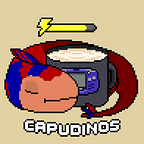Turning Red
Pixar’s latest movie, “Turning Red”, has certainly succeeded in increasing the popularity of the Red Panda.
In my opinion, the worst and only deficient point of the film were its detractors, since many negative points that people defamed are nothing more than absurd; however, today we are not here to discuss the film as such, but to report on the evolutionary biology of the red panda. I reserved this post for this date since, almost a month after its release, hardly anyone will be afraid of a spoiler.
It should be noted that, despite its symbolism about the first menstruation in the puberty, Turning Red is not the first film in which a red panda appears as a character, since these have already been seen in other animated films such as Kung Fu Panda, having the character of Master Shifu as an example.
Classification
Its scientific name is “Ailurus fulgens” and although it is commonly called “red panda” it is necessary to clarify that, unlike the giant panda, the red panda does not fall into the category of Bears, it actually belongs to the “Musteloide” group. With this clarified, it is completely correct to affirm that A. fulgens has more genes shared with raccoons than with the “Ursoide” group (Bears). Its taxonomy would be:
Domain: Eukarya
Kingdom: Animalia
Phylum: Chordata
Class: Mammalia
Order: Carnivora
Family: Ailuridae
Genus: Ailurus
Specie: fulgens
Evolution
Ailurus fulgens is a species that belongs to the order “Carnivora”, an order that originated in the Paleocene epoch, just after the extinction of the dinosaurs. The carnivorous order means “meat eaters” (The red panda is actually omnivorous), but it does not mean that all carnivores belong to this order, as is the case with sharks that belong to the order “Lamniformes” or dinosaurs like Tyrannosaurus that also remain outside the Carnivora group.
It is worth noting that the Ailuridae family originated in the Oligocene, comprising a total of eight genera, of which only one survives to the present day, the red panda.
Can I have a Red Panda as a pet?
Of course there are exotic pets; however, you will hardly be able to have a pet red panda, since they are not domestic creatures unlike dogs, cats and farm animals; It must also be added that they are in danger of extinction and require great care, not to mention their diet based mainly on bamboo and the conditions under which they must be kept, since they only live in China, Nepal and Myanmar, in environmental conditions that are too complicated to maintain replicate, and even more maintain.
So no, the red panda is not even close to an ideal pet, besides being territorial, they will end up making your house stinky. Although I do admit that they are very cute and attractive to the public.
However, technology has allowed us to achieve things that in the past would have seemed like witchcraft. If you want to see a Red Panda in your environment, Google has implemented the option of augmented reality, placing in the Google search engine (from the cell phone): “Panda Rojo”.
Just for clarification, Google has also implemented the Augmented Reality format of Mei Lee (the protagonist of Turning Red) in her Red Panda form; however, I did not include it because it was too large in actual size.
References
— Roberts, M. S.; Gittleman, J. L. (1984). «Ailurus fulgens». Mammalian Species (222): 1–8.
— Roth, A. (2019, 31 enero). No te dejes engañar por las redes sociales: los animales salvajes son terribles como mascotas. National Geographic. Recuperado 2 de abril de 2022, de https://www.nationalgeographicla.com/animales/2019/01/no-te-dejes-enganar-por-las-redes-sociales-los-animales-salvajes-son-terribles-como-mascotas
